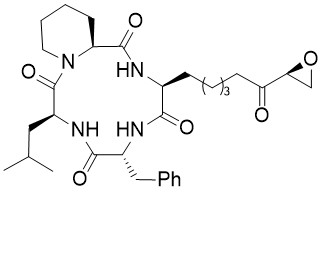WF-3161
Pharmaceuticals that target histone deacetylase (HDAC) enzymes have gained much attention in recent decades. The overexpression of HDACs correlates with numerous prevalent diseases, such as Alzheimer's disease and cancer. WF-3161 was first isolated from a strain of fungus, Petriella guttulata, by Umehara et al., who amassed a large body of structural and biological data on its activity, including anti-cancer activity against blood cancer cells in mice and antifungal activity against Trichophyton asteroides. In 2008, Proksch et al. obtained similar results with lymphoma cells from mice.
- K. Umehara, K. Nakahara, S. Kiyoto, M. Iwami, M. Okamoto, H. Tanaka, M. Kohsaka, H. Aoki, H. Imanaka, J. Antibiot.1983, 36, 478–483.
- P. Proksch, R. Ebel, R. Edrada, F. Riebe, H. Liu, A. Diesel, M. Bayer, X. Li, W. H. Lin, V. Grebenyuk, W. E. G. Müller, S. Draeger, A. Zuccaro, B. Schulz, Bot. Mar. 2008, 51, 209–218.
A novel synthesis of the naturally occurring HDAC inhibitor WF-3161 is described. Key steps include the Matteson homologation to generate the stereogenic centres in the side chain, and Pd-catalysed C–H functionalisation to connect the side chain to the peptide backbone. WF-3161 was found to be highly selective for HDAC1, whereas no activity was observed towards HDAC6. High activity was also found against the cancer cell line HL-60.
- M. Kohr, N. Papenkordt,M. Jung, U. Kazmaier, "Total synthesis and biological evaluation of histone deacetylase inhibitor WF-3161", Org. Biomol. Chem. 2023, 21, 4382−4387. DOI: 10.1039/D3OB00641G

